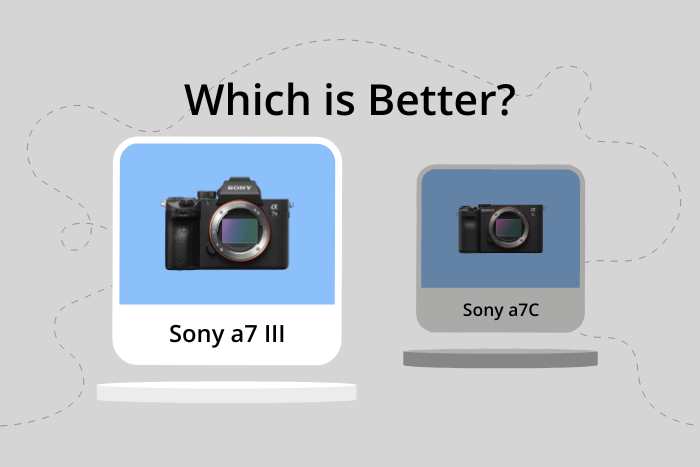Sony a7 III vs a7C Comparison
Sony a7 III
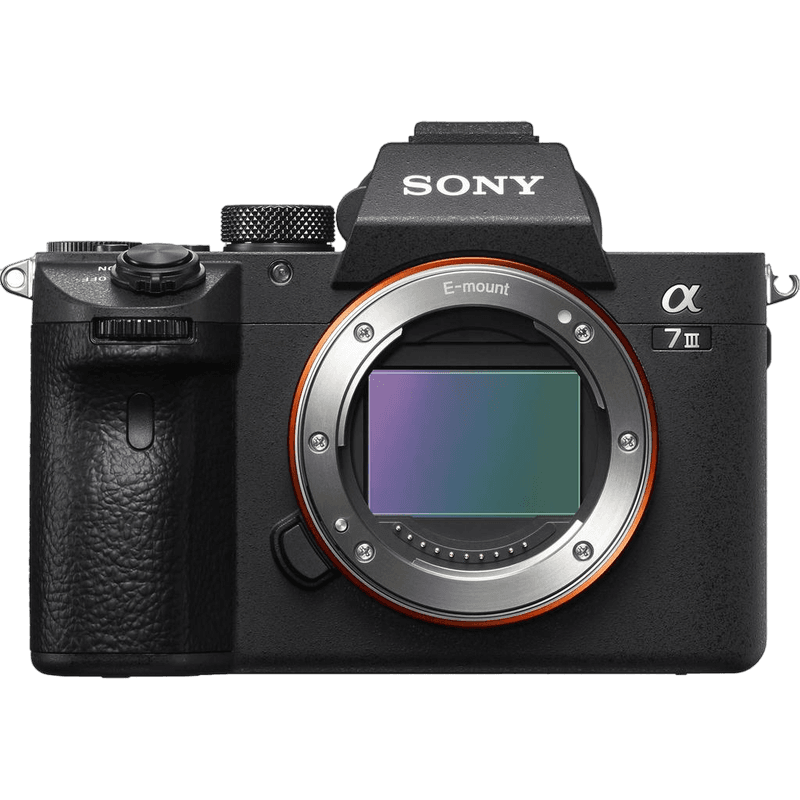
Sony a7C
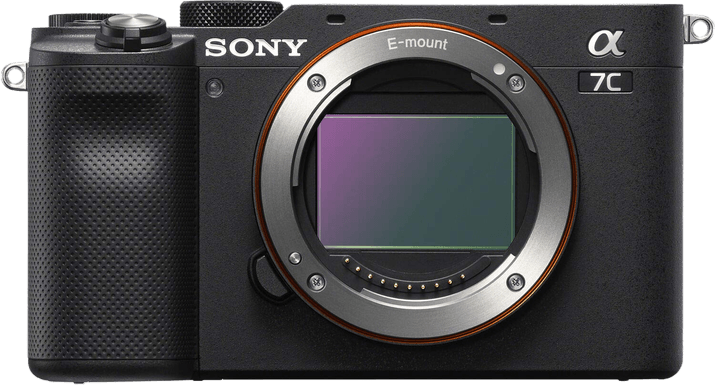
Sony a7 III vs a7C Overview
These entry-level mirrorless cameras are part of Sony’s Alpha series. They have the same full-frame sensor and offer similar performance. That means a Sony a7III vs a7C comparison must concentrate on the big difference in body and ergonomics.
The older Sony a7 III scores higher on specs, but it isn’t a huge difference.

Sony a7 III
Sony a7 III Pros and Cons
- Quick and accurate 693-point AF
- Wide ISO range with a low 50 setting
- Outstanding dynamic range and low-light performance
- Records stunning 4K video and has live stream capabilities
- Noise reduction can remove details
- Front heavy with big lenses
- Menu system is difficult to get used to
- No built-in time-lapse function
The a7 III looks like a DSLR camera. But the Sony a7C has a rangefinder layout. It looks more like one of Sony’s APS-C format cameras.
Neither body is better or worse than the other in principle. It’s usually just a matter of personal preference. Street or travel photographers might prefer the more compact Sony a7C. Others might prefer the Sony a7 III.
The rangefinder design of the Sony a7C means the viewfinder is a little smaller. It also has a slower maximum mechanical shutter speed, poorer performance at high ISOs, and only one storage slot.
However, the Sony a7C has higher frame rates, a bigger buffer, and gyroscopic stabilization. It’s also lighter.
And the a7C offers unlimited video recording, longer battery life, and lower minimum focus sensitivity. That means the autofocus works in darker conditions.
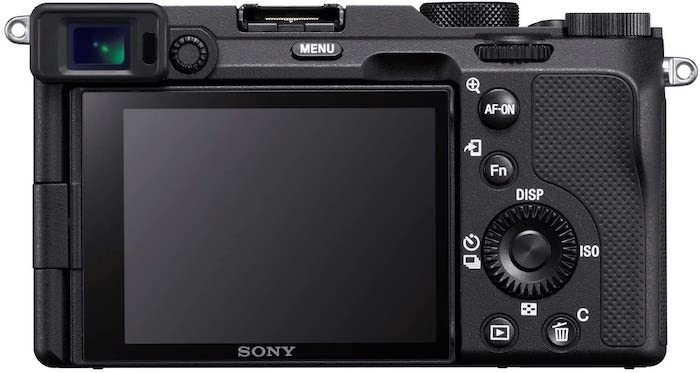
Body and Handling
The Sony a7C isn’t quite pocket-sized. But the flat-topped rangefinder layout makes it smaller and lighter than the Sony a7 III. It a7C looks like a lot of compact cameras.
The viewfinder resolution is the same on both cameras. However, the Sony a7C’s smaller viewfinder and rectangular shape make it harder to handle with long telephoto lenses.
If you prefer shooting in Live View, the Sony a7C’s vari-angle screen is much more flexible. You can use it to shoot in portrait and landscape formats. You can twist it around to face up or down. And you can even swing it out to the side and rotate it 180° for selfies and vlogging.
The Sony a7 III’s tilting screen has the same number of dots and offers the same screen size. However, it can only be tilted to help while shooting in landscape format.
The Sony a7C’s aperture and shutter speed dials are on the back of the camera. But they’re on the front and back of the Sony a7 III. It might seem like a small thing. But it means you can change your exposure settings with your thumb and forefinger without altering your grip. That gives the a7 III a big speed advantage.
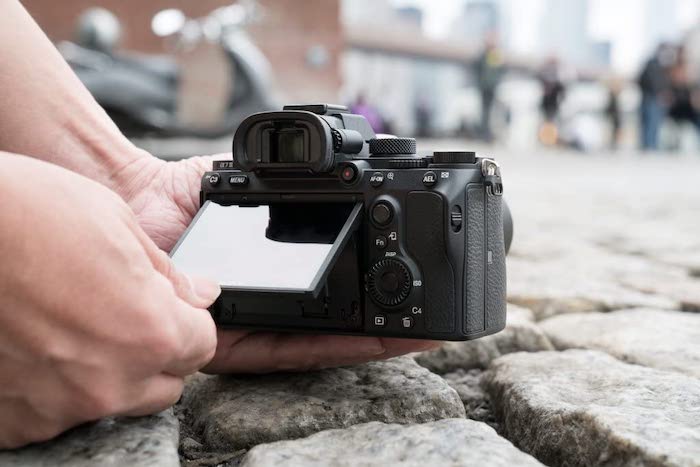
Sony a7 III vs a7C Optics
The two cameras have the same Backside Illuminated Exmor R CMOS sensor and Bionz X processing engine. That means there should be no difference in image quality when using the same lenses. However, the DXOMARK sensor scores rate the Sony a7 III slightly better in low-light situations.
Both cameras have the same 5-axis sensor-shift IBIS (in-body image stabilization) system. So they offer the same five-stop improvement in image stabilization.
They also have the same number of phase-detection and contrast-detection focus points, covering 93% of the frame. However, the Sony a7C’s AF system’s sensitivity in low light is one stop better.
Both also offer these features:
- High continuous shooting speeds
- Face detection and eye tracking
- AE bracketing
- An Anti-flicker mode
But the a7C also incorporates Sony’s latest AI-powered subject recognition system. This offers better AF tracking—especially when your subject’s eyes are temporarily hidden.
Kit Lenses
You may want to save money by buying a “starter kit” or “kit lens” bundled with either camera. You have several options. B&H offers the following lenses with the Sony a7C and a7 III:
- 20 mm f/1.8
- 24-70 mm f/4 (plus the 24-70 mm f/2.8 with the a7 III)
- 24-105 mm f/4
- 28-60 mm f/4-5.6
- 50 mm f/1.8
These lenses all have shorter focal lengths. They’re general-purpose lenses for everyday shooting.
The 20 mm and 50 mm have a “fast” maximum aperture of f/1.8. It’s ideal for working in low light or creating a shallow depth of field. The other lenses start at f/4, which is not too bad. But you’d probably be happier with f/2.8.
All the lenses are fairly light, compact, and portable. And one or two of them, such as the 20 mm, are equipped with a Dual XD Linear Motor system and internal focusing. That makes the autofocus system quick, quiet, and accurate.
Sony a7 III vs a7C Video Performance
Both cameras offer 4K Ultra HD (3840 x 2160) footage up to 30p. This uses 2.4x oversampling (without pixel binning) to add color depth and dynamic range.
Alternatively, you can shoot in Full HD up to 120p / 100p (NTSC/PAL) for slow-motion playback. Both cameras also offer flat S-Log2 and S-Log3 formats for color grading.
They both feature a Hybrid Log-Gamma (HLG) picture profile. This allows direct playback to HDR (HLG) TVs. They also both provide the following:
- Time-lapse recording
- A zebra stripes warning to indicate blown-out highlights
- Gamma Display Assist for brighter S-log video display contrast
- Proxy recording
- External ports for a mic and headphones
The Sony a7 III can record in AVCHD format. However, the Sony a7C’s gyroscopic stabilization and unlimited recording are better for video.
Sony a7 III vs a7C Features and Benefits
Neither has a built-in flash. But the two models share a long list of other features:
- Support with RAW files
- Electronic levels
- External mic and headphone ports
- Smartphone remote controls
- Wi-Fi, Bluetooth, and NFC connections
- Webcam functionality
As you can see below, they share many convenient specs. Notable ones are touch screen capability, weather sealing, and Blue Tooth connectivity.
Sony a7 III vs a7C Storage and Battery
The battery and memory card setups are almost similar. The Sony a7C has only one SD memory card slot. But it can take either UHS-I or UHS-II cards.
The Sony a7 III has dual card slots. One is for UHS-I, and the other is for UHS-II cards. You can use these two slots in a variety of ways:
- Shoot in RAW and JPEG, saving each format to a different card
- Shoot stills and video, saving each format to a different card
- Record to one card and then switch to the other when the first card fills up
- Copy files from one card to the other
SD memory cards are gradually being replaced by XQD cards and CFexpress Type A and B cards on high-end cameras. However, they’re still cheap and popular enough to survive for a while longer. We have a guide to memory card types you may want to check out for more information.
Both cameras take the Sony NP-FZ100 rechargeable battery. The battery life is similar, but the a7C gets 130 more frames from a single charge.
Sony a7 III vs a7C – Our Verdict
- Sony a7C: It’s lighter. It has a larger buffer size, lower minimum focus sensitivity, and gyroscopic stabilization. Plus, it has unlimited video recording and a longer battery life.
- The Sony a7 III: Has a faster shutter speed, better high ISO performance, a larger viewfinder, and two SD storage slots.
The performance of these two full frame mirrorless cameras is very similar. It’s best to approach your choice between them based on your photography style and preferences.
If you’re a street or travel photographer and prefer stealth, portability, and convenience, then go for the Sony a7C. This compact full frame camera is also good for videographers.

Sony a7C
Otherwise, you might prefer the bigger viewfinder and more traditional ergonomics of the Sony a7 III. That’s especially true if you’re used to using a DSLR with telephoto lenses.

Sony a7 III
What Camera is Better Than the a7 III?
I should point out that the upgraded Sony a7 IV came out in October 2021. It’s more expensive. But it improves the Sony a7 III’s features across the board, particularly in video capability.
The a7 IV boasts gyroscopic stabilization, unlimited video recording, and three more video formats.
You also get several other upgrades:
- A 33 MP image sensor
- 66 more focus points
- One-stop better minimum focus sensitivity
- An anti-dust shutter
- CFexpress Type A card support
- A full-size HDMI port
- 56% more resolution from the LCD screen and EVF (electronic viewfinder)
If you’re still unsure, get inspired with some of our other popular comparisons:

